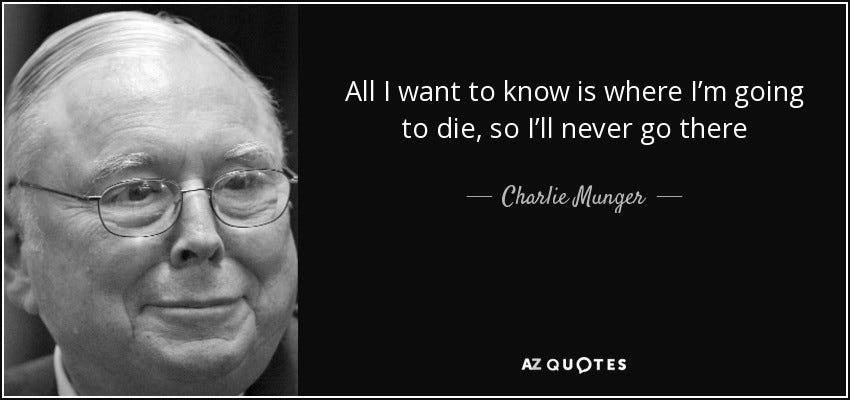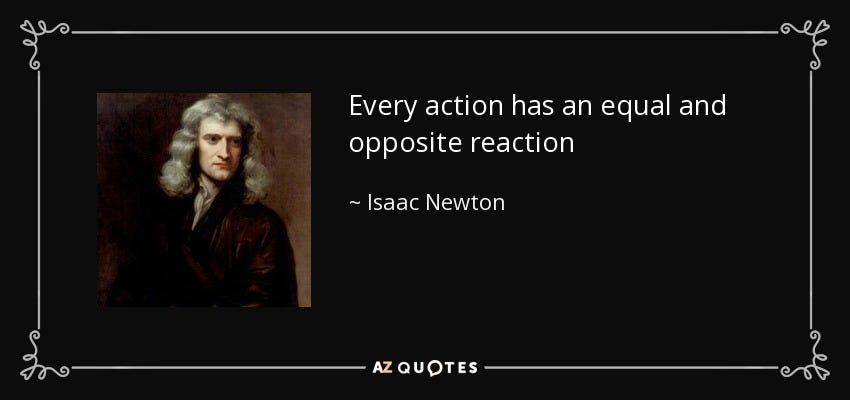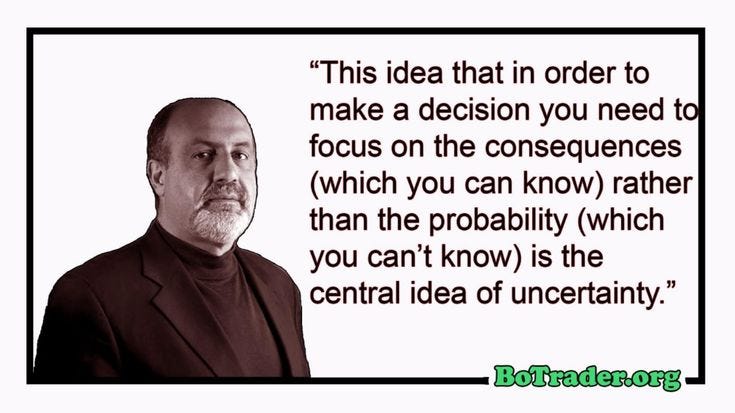All Aboard Anna Karenina's Express to Triumph!
Master the tracks of risk and liberate yourself from cultural shackles
This post is also available on Spotify
In the previous edition, we delved deep into Jeff Bezos' Secret Sauce that made Amazon the World's Most Valuable Brand.
We went into the Innovative DNA of businesses, exploring the Day 1 Mentality and how embracing failure can be the uncharted path to triumph.
But what if I told you that the journey doesn't end there?
That understanding failure is just one piece of a much larger puzzle?
Welcome to this edition, where we unravel the intricate railway of success and setbacks, linked by lines of risk, legacy, and cultural perspectives.
Drawing inspiration from a literary classic to modern-day thinkers, we'll embark on a journey to:
Decode the Anna Karenina Principle and its profound implications on success.
Navigate the treacherous waters of risk, understanding its double-edged nature.
Challenge the generational curses that shape our views on setbacks.
And paint a vivid picture of how different cultures perceive and respond to failure.
Let's depart into the world of risk, rewards, and the resilience that bridges the two. Let's begin with a principle that has its roots in a 19th-century Russian Masterpiece but holds timeless wisdom for us all...
The Anna Karenina Principle in Business
"All happy families are alike; each unhappy family is unhappy in its own way." - Leo Tolstoy, Anna Karenina, 1877.
Now, you might be wondering, "What the hell do families have with businesses?".
One word: Everything!
Happy families often share a bunch of common attributes:
Loving parents who are strong role models.
A supportive environment so the kids can thrive.
Kids that look up to their parents.
Similarly, successful businesses have their own set of shared traits:
A clear, compelling vision.
A laser focus on solving a specific problem.
An unwavering commitment to customer satisfaction.
An ability to adapt to change and innovate.
Or, better yet, PROMOTE CHANGE.
But here's the kicker: While there's a single path to success, there are countless roads to ruin.

A Business can fall prey to:
An incompetent founder.
A string of bad decisions that are not corrected in time.
A disastrous hit to your infrastructure (you picked a bad time to be uninsured…).
Investors closing the cash-tap because you spent too much money on ping pong tables.
And countless other ways.
Avoiding Fatal Mistakes
The Human Brain is better at predicting what could go WRONG, rather than what could go RIGHT. Use this in your favor.
Think about what factors could lead your business to insolvency. And avoid them at all costs.
“But you told us in the last edition that we should EMBRACE failure. Are you a hypocrite, Gabriel?”.
Not at all, my dear friend! Embracing failure is about learning from our mistakes, growing, and iterating. It's about understanding that setbacks are part of the journey.
However, while we should embrace the lessons from failures, it's equally crucial to recognize and steer clear of catastrophic mistakes that can be the endgame. In the next section, I’ll talk about how Risk can be a Double-Edged sword.
The Double-Edged Sword of Risk
Every action has a consequence. It's a fundamental law of physics, as Newton’s Third Law reminds us:
In life, every decision carries a risk.
Often times, we turn a blind eye to the risks we’re used to. For instance, texting while driving might seem harmless until it's not. There are things you normalize that put you under existential risk.
Likewise, you might feel ‘secure’ by working for a big corporation. But are you, really?
What will happen if the CFO determines your company must cut costs and your whole department is terminated at the click of a button? Suddenly, you’ll be jobless.
The Tightrope of Risk
Understanding risk is crucial in business. It's about weighing potential rewards against pitfalls. As Nassim Taleb, the author of "Black Swan" and "Antifragile," puts it:
Great, Gabriel! Another quote from a big-shot! But how can I balance risk in my OWN life?
Let’s delve into the concepts of Symmetry and Asymmetry:
Symmetric Consequences are predictable.
Doubling ingredients will yield a cake twice as big.
Smoking a pack of cigarettes a day might lead to lung cancer down the line.
Asymmetric Consequences are unpredictable and can make or break you.
Detrimental: Texting while driving is harmless most of the time. But WHAT IF in the 1000th time, you go down a cliff? Was the juice worth the squeeze?
Beneficial: a sudden windfall from a low-risk investment. Low-risk, high-reward.
Contrary to popular belief, risk and return aren't always linearly correlated.
But you are on the Rock n’ Road to Success and ready to learn the BILLIONAIRE SECRET of Hedge Fund managers:
They look for Asymmetries in information and projected outcomes.
The key is to find opportunities with low, known risks but high, potentially unknown rewards.
Think about what happens when a certain stock or commodity skyrockets. Or a content creator that blows up out of the blue.
Consider the Risk vs. Reversibility matrix from FourWeekMBA:
As we can see, when the risk is low, the upside is high, and the experiment is reversible, you should go ALL IN!
Another, EVEN BOLDER, perspective is the Bezos Matrix.
Unless the consequences are high and the decision can’t be undone, Uncle Jeff likes to DECIDE FAST!
If it works for him, why shouldn’t it work for you?
Now, imagine if "Uncle Jeff" Bezos was your actual uncle. How different would your perspective on risk be if you grew up in a family that celebrated experimentation and embraced failure?
In the next section, we'll dive into the cultural perspectives on risk and how breaking free from generational curses can redefine your approach to business and life.
Fear x Courage: The Intergenerational Legacy
Imagine a world where every stumble isn't a mark of shame but a badge of learning.
Picture a childhood where every idea, no matter how wild, is met with encouragement and curiosity. What if, after every setback, you were greeted with,
“Great effort! What did you learn?”
Can you see how this attitude could make a world of difference during your formative years?
Unfortunately, many families inadvertently stifle creativity, pushing their young ones to fit into societal molds and avoid taking risks.
Breaking The Generational Curse:
Generations pass down more than just heirlooms; they also transfer limiting beliefs. These invisible chains hold back potential, making fear more familiar than ambition.
It's time to challenge these age-old narratives. Ensure that your kids are not bound by the fears of the past, but empowered with a mindset that embraces challenges and learns from setbacks.
Cultural Perspectives on Failure:
Our view of failure isn't just personal; it's cultural. In some societies, a single setback can label you for life, discouraging any form of risk-taking. Staying in the cozy comfort zone is seen as smart.
Yet, in places like Israel or Silicon Valley, every stumble is just another lesson, another story to share. Geography has nothing to do with this; it's about mindset.
Whether you're in Sweden, where caution might be the norm, or in a startup hub where risks are the daily bread and butter, the lens through which you view failure defines your journey.
Break the Mold: All aboard the Express!
It’s time to embark in Anna Karenina’s Express to Triumph! From now on, you’ll live as if you were born into a family of go-getters in a country that encourages experimentation.
Embrace a mindset that celebrates experimentation, resilience, and innovation. Let's cultivate a culture that sees failure not as a dead-end but as a detour to a more enlightened path.
In Closing: Choose your Railway
As the train pulls away from Panic Station and you reflect on this edition, keep these key takeaways in mind:
The Anna Karenina Principle: Success has a pattern; failure doesn't. Whether in families or businesses, those who succeed often share common attributes, while failures are unique in their pitfalls.
Leveraging Risk: Not all risks are created equal. The key is to identify and act on those where potential rewards far outweigh the downsides, creating asymmetric opportunities.
Generational Legacy: Our past doesn't have to dictate our future. While upbringing and cultural norms shape our views, we possess the power to challenge and redefine these beliefs.
The Power of Perspective: How we perceive setbacks determines our trajectory. They can either be chains that hold us back or stepping stones that propel us forward.
Dance with the Unknown: While every venture has its risks, it's the ventures where the potential gains are vast and transformative that truly matter.
Cultural Tapestry: Societies around the world have varied views on failure. Yet, irrespective of the cultural lens, one truth stands tall: setbacks are merely precursors to comebacks.
If these insights struck a chord with you, let their message not just echo in your mind but reverberate in your actions. Share this edition with someone who needs a fresh perspective on setbacks and risks. Together, let's redefine failure and champion the idea that every stumble is a step closer to success.
Stay tuned into my rock 'n' roll journey through these social media channels:
X/Twitter: For when 280 characters are enough to capture a moment on the road. Click here
Medium: For Mindblowing Articles
Spotify: Check out Parada de Sucesso, my Podcast in Portuguese Here!
Rock n’ Road to Success Podcast in English
YouTube Channel: Where rock meets reality. Click here
Merch Store: Where poetry meets profit. Click here
Anticoach: My website about no-nonsense self-development. Click here
Instagram: For those insta-worthy moments on the journey. Click here
LinkedIn: Where business meets the beat. Click here
And that's it for this week's edition of "Rock n’ Road to Success"! Until next time, keep rocking and rolling towards your dreams! 🤘














👏🏻👏🏻👏🏻 texto incrível